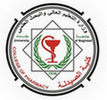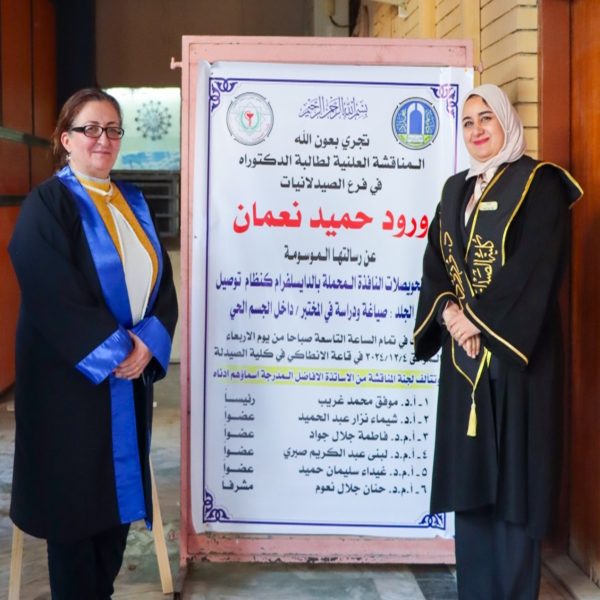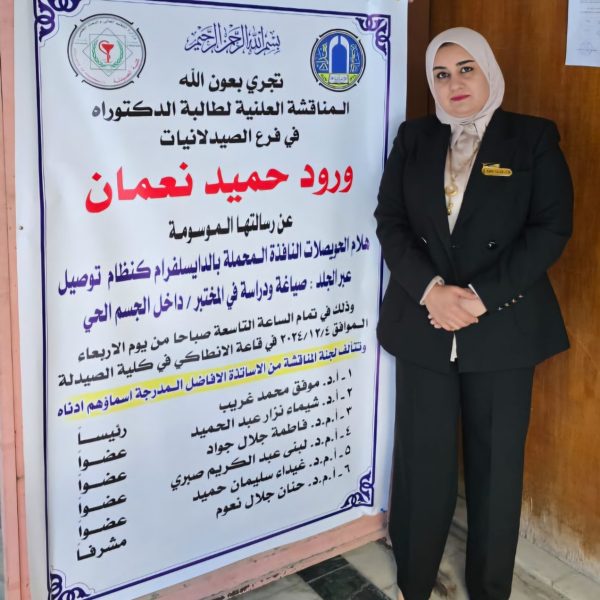The College of Pharmacy discussed the PhD dissertation entitled “Invasomes Transdermal Gel Using Disulfiram as Modeling Drug: Preparation and In-vitro / In-vivo Study” by the student Worood Hameed Noaman and the supervisor, Associate Prof. Dr. Hanan Jalal Kassab, at the Pharmaceutics Department. The study aimed to design new disulfiram models for transdermal delivery as an alternative to the oral route by preparing a disulfiram nano-invasome transdermal gel that facilitates permeation through skin layers, enhances solubility, prolongs therapeutic effects, reduces side effects, and improves patient compliance.The study included the preparation of disulfiram invasomal dispersion using the thin film hydration method, followed by evaluation after optimization with limonene, citral, and carvacrol at concentrations of 0.5%, 1%, and 1.5% for each terpene. Various phospholipids (soya phosphatidylcholine, hydrogenated soya phosphatidylcholine, and sunflower phospholipids) were tested at concentrations ranging from 2% to 5% for each type to optimize the formula. The optimized invasomal dispersion, with an encapsulation efficiency (EE%) > 65% and a particle size < 400 nm, was selected for in vitro release testing. The results showed that the optimal nanoinvasomal dispersion was formula (F16), with a particle size of 119.2 ± 2.2 nm, a polydispersity index of 0.18 ± 0.05, and an entrapment efficiency of 95.3% ± 0.8%. Approximately 96.32% of DSF was released from the invasomal dispersion over 24 hours. The zeta potential value was -33.6 ± 1.6 mV. Next, the F16 formula was incorporated into hyaluronic acid to form a gel, which was then evaluated. NIVs-g3 showed a non-Newtonian flow and a higher drug content compared to the disulfiram-suspension. In addition, the ex-vivo skin permeation through rat skin was greater for the NIV-g3 gel than for the disulfiram suspension, with an enhancement ratio of 4.27. The relative bioavailability of the transdermal disulfiram nanoinvasomal gel was five times greater than that of the oral disulfiram suspension following a single dose. The study concluded that the disulfiram-loaded nanoinvasomes gel demonstrated improved permeation and provided a safer method for delivering disulfiram through the skin, offering a more convenient alternative to the oral route of disulfiram. Based on the above results, the study recommended incorporating the selected nanoinvasomal dispersion formula into different gelling agents, such as poloxamer, chitosan, and carbopol, to examine their effects on drug release and permeation. It also recommended the possibility of preparing a transdermal patch from the selected formula. The study further suggested the need to conduct a pilot plan to manage large-scale production and subsequent marketing.





